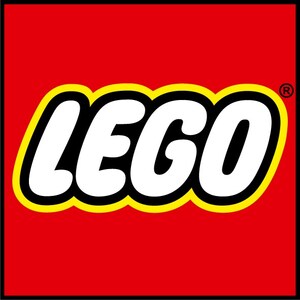SPACE BRICKS: HOW LEGO BRICKS ARE HELPING SCIENTISTS BUILD ASTRONAUT SHELTERS ON THE MOON
- Inspired by the LEGO® system in play, scientists at the European Space Agency (ESA) have used dust from a 4.5 billion year old meteorite to 3D print bricks, similar to a LEGO brick, to help design astronaut shelters on the moon
- The ESA Space Bricks have helped the ESA team explore how buildings could be made using materials found in space
- A selection of these bricks will now go on display in select LEGO Retail stores and LEGO House from 24th June to 20th September 2024
ENFIELD, Conn., June 25, 2024 /PRNewswire/ -- Scientists at the European Space Agency (ESA) have turned to their love of LEGO brick building when designing launch pads and shelters for astronauts visiting the moon, as part of the Artemis program. To test whether space materials could be used to create structures, the team 3D printed similar to LEGO bricks with meteorite dust to see if could still be used as a building block on small scale versions of structures.
The resulting ESA Space Bricks will now go on display in select LEGO Stores in the USA, Canada, UK, Germany, France, Denmark, Spain and Australia plus the LEGO House, in Billund, Denmark, to inspire the builders of tomorrow of how LEGO brick building can help solve out of this world problems. United States store locations where ESA Space Bricks are displayed include:
The LEGO Store, Mall of America, Bloomington, Minnesota
The LEGO Store, Disney Springs, Florida
The LEGO Store, Water Tower Place, Chicago
The LEGO Store, Disneyland Resort, California
The LEGO Store, 5th Avenue, New York
The real structures will be built on the moon, using materials found there, but they first needed to understand if a space material could even be made into building blocks and they needed to do this on a small scale. The space material on the moon is regolith, but there is only a very small sample available on Earth, collected from the Apollo mission. So, the team turned to another, very similar space material – meteorites, which they ground up into dust and mixed with a small amount of polylactide and regolith simulant and used this to 3D print bricks similar to LEGO bricks– making the ESA Space Bricks. The meteorite they used is approximately 4.5 billion years old and was original discovered in North-West Africa in 2000 and is technically classed as a L3-6. It is a brecciated stone which has many different elements incorporated within it, such as large metal grains, inclusions, chondrules and other stone meteorite elements.
Talking about the project, ESA Science Officer, Aidan Cowley said, "Our teams are working towards the future of space travel and take inspiration from not just what's above us, but also what we can find on Earth. No-one has ever built a structure on the moon, so we have to work out not only how we build them but what we build them out of as we can't take any materials with us. My team and I team love creative construction and had the idea to explore whether space dust could be formed into a brick similar to a LEGO brick so we could test different building techniques. The result is amazing and whilst the bricks may look a little rougher than usual, importantly the clutch power still works, enabling us to play and test our designs.
Daniel Meehan, Creative Lead at The LEGO Group notes the real-world impact LEGO bricks can have outside of creative play and says, "We recently found out that space remains an area of huge curiosity with 87% of Gen Alpha kids interested in discovering new planets, stars, and galaxies. With the ESA team using the LEGO System-in-Play to advance space travel, it shows kids the sky really is the limit when it comes to LEGO brick building and we hope it encourages children to have a go at building their own space shelters!"
Following the important part in developing potential future infrastructure on the Moon, 15 ESA Space Bricks will go on display in select LEGO Stores globally to help encourage kids to find out more about space travel and be inspired to build their very own moon shelters. The ESA Space Bricks will be on display in select LEGO Stores in the USA, Canada, UK, Germany, France, Denmark, Spain and Australia plus the LEGO House, in Billund, Denmark from 24th June to 20th September.
To find out more about the ESA Space Bricks and see the exciting range of LEGO Space sets, visit www.LEGO.com/Space.
For more information, please contact [email protected].
About the LEGO Group:
The LEGO Group's mission is to inspire and develop the builders of tomorrow through the power of play. The LEGO System in Play, with its foundation in LEGO bricks, allows children and fans to build and rebuild anything they can imagine.
The LEGO Group was founded in Billund, Denmark in 1932 by Ole Kirk Kristiansen, its name derived from the two Danish words Leg Godt, which mean "Play Well". Today, the LEGO Group remains a family-owned company headquartered in Billund. However, its products are now sold in more than 120 countries worldwide.
For more news from the LEGO Group, information about our financial performance and responsibility engagement, please visit www.LEGO.com/aboutus.
About the European Space Agency:
The European Space Agency (ESA) provides Europe's gateway to space.
ESA is an intergovernmental organisation, created in 1975, with the mission to shape the development of Europe's space capability and ensure that investment in space delivers benefits to the citizens of Europe and the world.
ESA has 22 Member States: Austria, Belgium, the Czech Republic, Denmark, Estonia, Finland, France, Germany, Greece, Hungary, Ireland, Italy, Luxembourg, the Netherlands, Norway, Poland, Portugal, Romania, Spain, Sweden, Switzerland and the United Kingdom. Latvia, Lithuania, Slovakia and Slovenia are Associate Members.
ESA has established formal cooperation with four Member States of the EU. Canada takes part in some ESA programmes under a Cooperation Agreement.
By coordinating the financial and intellectual resources of its members, ESA can undertake programmes and activities far beyond the scope of any single European country. It is working in particular with the EU on implementing the Galileo and Copernicus programmes as well as with Eumetsat for the development of meteorological missions.
Learn more about ESA at www.esa.int
SOURCE The LEGO Group

WANT YOUR COMPANY'S NEWS FEATURED ON PRNEWSWIRE.COM?
Newsrooms &
Influencers
Digital Media
Outlets
Journalists
Opted In







Share this article